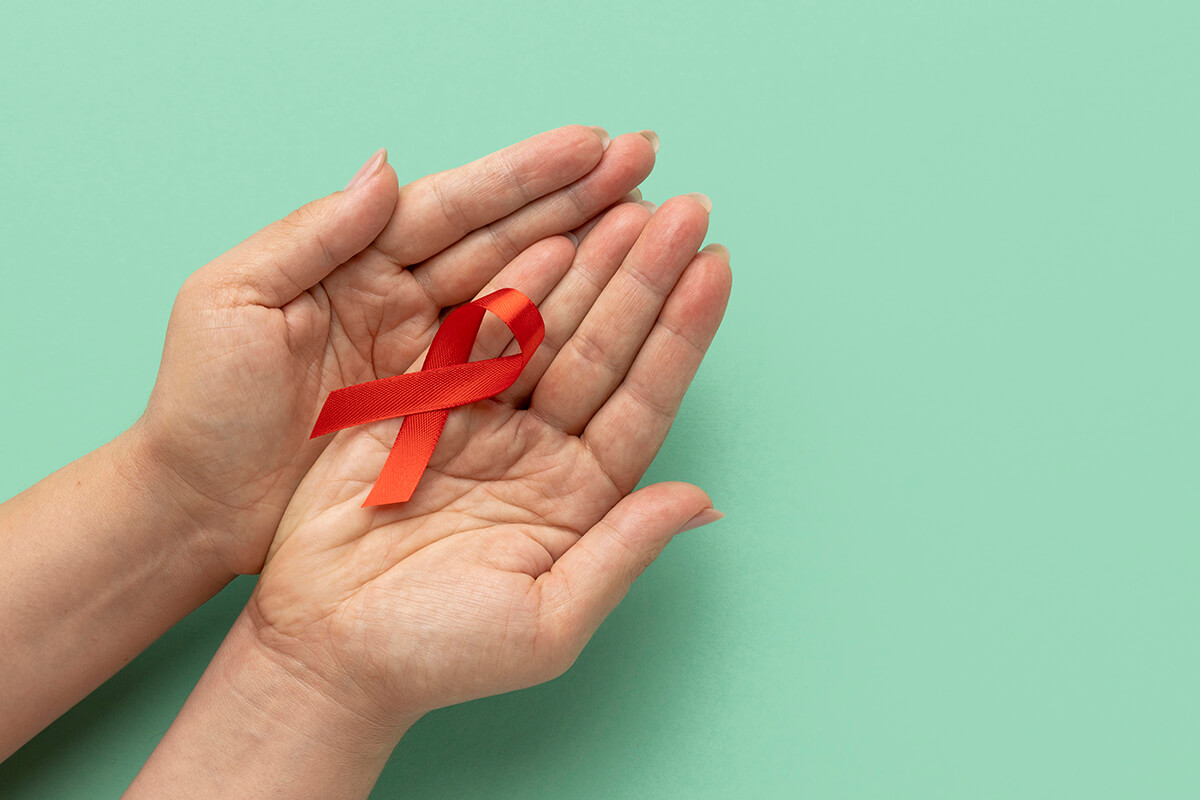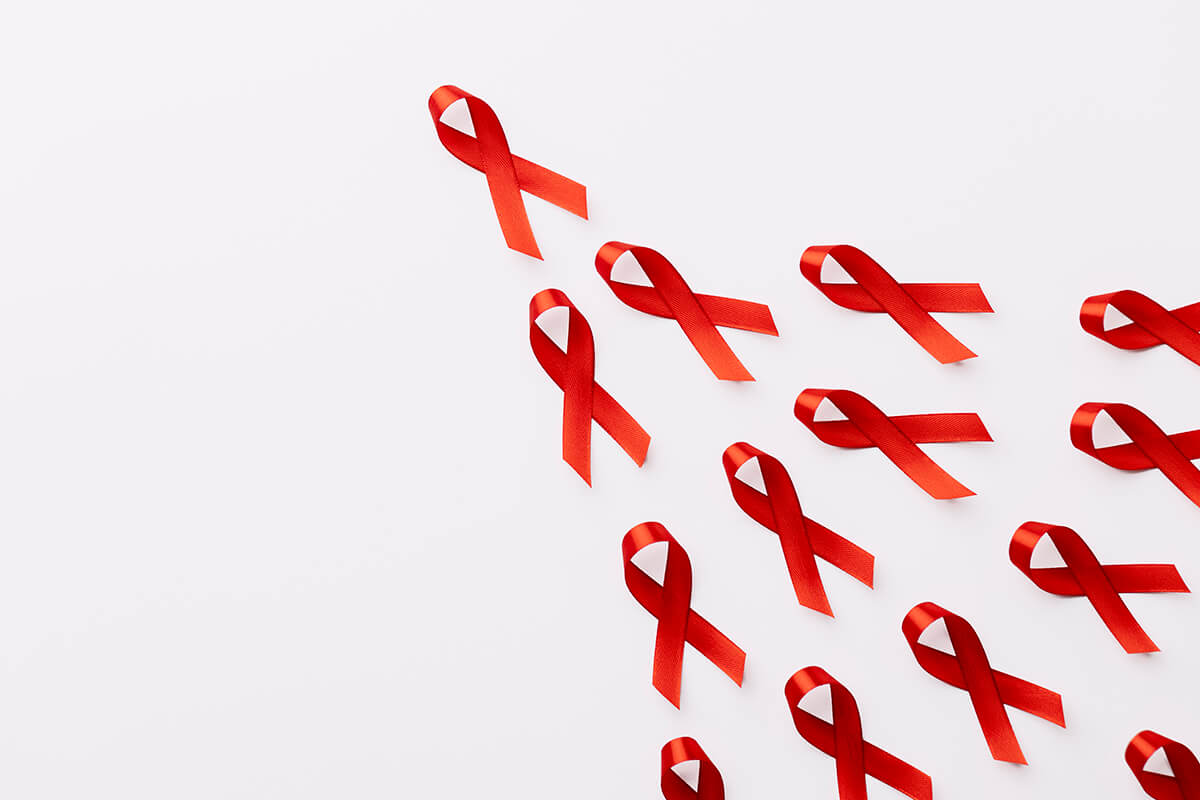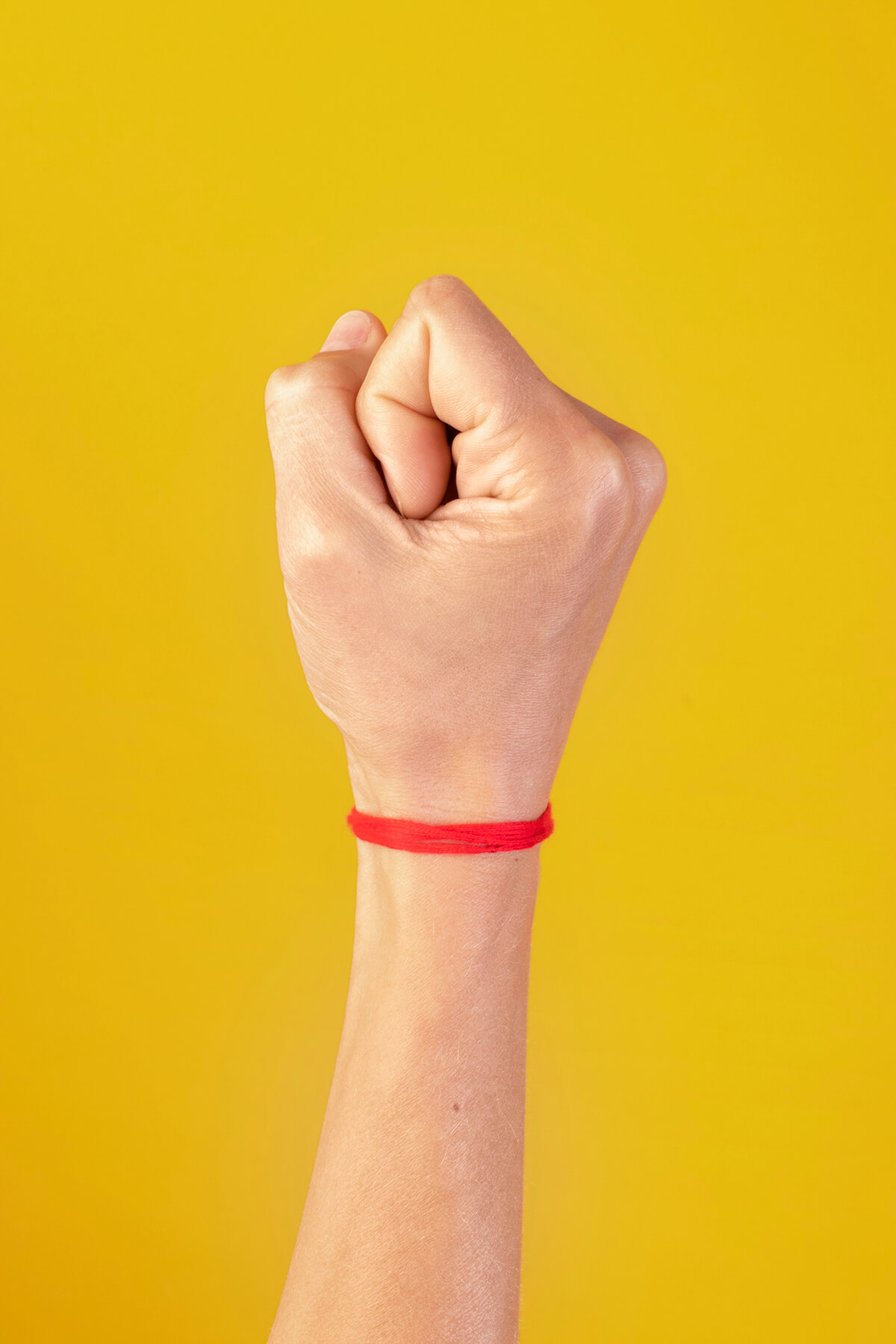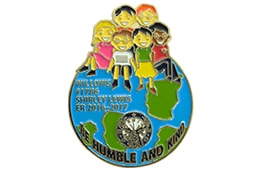
Each December 1st, the world unites for a vital cause: World AIDS Day. This commemorative day, established in 1988, is not just a date on the calendar—it’s a global movement, a call to action in the ongoing fight against HIV/AIDS. It’s a day for remembering those who have lost their lives to this relentless disease, for supporting those bravely living with it, and for renewing our collective commitment to eradicate it.
At the forefront of this movement is the red ribbon, an emblem that transcends language and culture. More than just a symbol, it’s a powerful statement of solidarity, compassion, and awareness. Wearing a red ribbon is a personal pledge that the wearer stands with AIDS survivors, researchers, and advocates in the face of this global challenge. It’s a reminder that, though we’ve made significant progress over the last few decades, the battle against HIV/AIDS continues.
This World AIDS Day, we at Wristband Creation invite you to join this crucial fight. Wear a red ribbon, show your support, and be part of a collective voice that says: We are not done yet.
What Is World AIDS Day?
World AIDS Day, observed annually on December 1st, serves as a poignant reminder of the global impact of HIV/AIDS. It’s a day dedicated to raising awareness about the virus, advocating for effective policies, and promoting compassionate care for those affected.
First celebrated in 1988, World AIDS Day was the first-ever global health day, and it marked a pivotal historical moment in the public health world. It acknowledges the millions of lives lost to the disease and supports the ongoing fight against HIV/AIDS. The day is a call to action for individuals, communities, and governments worldwide to unite their efforts to improve education and reduce the stigma associated with HIV/AIDS.
The Symbolism of the Red Ribbon
The red AIDS ribbon, now a globally recognized symbol, has a history as profound as its impact. In the early 1990s, the Visual AIDS Artists’ Caucus sought to create a symbol that would express compassion for people living with HIV/AIDS and encourage dialogue about the epidemic. They chose a looped red ribbon for its simplicity and immediacy, inspired by the yellow ribbons tied on trees during the Gulf War. The color red was selected for its connection to blood and the idea of passion. This ribbon was intended not just to signify anger about the devastation of the disease, but it was also to convey love and care for those affected.
Going forward, the red ribbon quickly became an important tool for breaking down the silence and stigma surrounding HIV/AIDS. Its visibility soared when actor Jeremy Irons wore it during the 1991 Tony Awards, making a public statement of solidarity on one of television’s biggest stages. This act of support brought the ribbon into the public eye and transformed it into an emblem of awareness and unity.
Today, wearing an AIDS ribbon is a powerful gesture that both honors those lost to AIDS and commits to supporting those still living with HIV, as well as the ongoing efforts toward improving disease prevention and developing a cure.

The Current State of HIV/AIDS
In the decades since the onset of the HIV/AIDS epidemic, modern medicine has made remarkable progress in diagnosing and treating the disease. Advancements in medical science have revolutionized the management of HIV, transforming it from a fatal illness into a chronic condition that can be controlled with medication.
A key breakthrough in this area has been the development of long-acting antiretroviral therapies. These innovative treatments, which potentially require less frequent dosing than daily pills, aim to improve adherence and reduce side effects.
Scientists are also exploring broadly neutralizing antibodies (bNAbs) that can combat a wide range of HIV strains and offer extended protection. Lastly, the pursuit of therapeutic vaccines represents a promising frontier. These treatments work by stimulating the immune systems of those already infected with HIV, which may enable their bodies to control the virus more effectively.
Despite these advances, the fight against HIV/AIDS remains a significant global concern. Data from UNAIDS shows that in 2022, approximately 39.0 million people worldwide were living with HIV. Of these, 29.8 million were accessing antiretroviral therapy. However, there were still 1.3 million new infections and 630,000 AIDS-related deaths. These numbers underscore the ongoing need for awareness, education, and access to effective treatment and prevention strategies.
How You Can Participate
Participation in World AIDS Day can be both meaningful and impactful. It can start with wearing a red ribbon as an act of solidarity, but there are more ways to contribute. Educating yourself and others about HIV/AIDS is another good place to begin. Social media offers a platform to spread awareness and dispel myths. Engaging in local events, whether it be a walk, a vigil, or a fundraising event, helps to nurture a sense of community and shared purpose. Lastly, donating to organizations dedicated to HIV/AIDS research and patient support can make a tangible difference.
Make no mistake that every action, no matter how small, contributes to a larger collective effort to support those affected by HIV/AIDS and to continue the fight against this global epidemic. Consider connecting with AIDS organizations near you if you’d like to take your participation in this advocacy to the next level.
Red Ribbons for Various Awareness Initiatives
The red ribbon, with its powerful symbolism of unity and compassion, transcends its origins as a symbol for HIV/AIDS awareness. It has found a place in various other awareness initiatives and causes, each utilizing the ribbon’s visibility and meaning to shed light on critical issues. Here are some notable examples:
- Substance Abuse Awareness: The red ribbon takes on a role in substance abuse awareness initiatives. Events like Red Ribbon Week, held in October, focus on drug prevention and education. By wearing red ribbons, participants show their commitment to a drug-free, healthy lifestyle.
- Heart Disease Awareness: Red is synonymous with heart health awareness. The American Heart Association often employs the color red to draw attention to heart disease and related conditions, especially during American Heart Month in February. Red ribbons are a part of these campaigns, symbolizing support for heart health.
- Stroke Awareness: Like heart disease, strokes are highlighted with the help of red ribbons. World Stroke Day, recognized on October 29th, may feature the use of red ribbons to emphasize stroke awareness, prevention, and support for stroke survivors.
- Hemophilia Awareness: Red is the designated color for raising awareness about hemophilia, a rare bleeding disorder. On World Hemophilia Day, celebrated every April 17th, red ribbons play a role in promoting understanding and support for individuals living with hemophilia.
- DARE Programs: The DARE (Drug Abuse Resistance Education) program, designed to educate young people about the dangers of drug abuse, often employs red ribbons to symbolize its mission. By wearing red ribbons, students and educators show their commitment to drug prevention.
These examples illustrate how the red ribbon’s significance goes beyond HIV/AIDS awareness. It serves as a universal symbol of unity, compassion, and advocacy across diverse causes, reminding us that collective action can drive positive change in our communities and the world.

Awareness Ribbons for Various Cancers
While the red ribbon is a powerful symbol for HIV/AIDS awareness, it’s worth noting that different colored ribbons represent various types of cancer awareness. These ribbons serve as symbols of support, hope, and solidarity with individuals and families affected by cancer. Here are some of the most recognized ribbon colors and their corresponding cancer types:
- Pink Ribbon: The pink ribbon is widely recognized as a symbol for breast cancer awareness. October is dedicated to Breast Cancer Awareness Month, and during this time, you’ll often see pink ribbons adorning clothing, accessories, and even buildings in support of breast cancer survivors and ongoing research efforts.
- Blue Ribbon: Blue ribbons are used to raise awareness for a variety of cancer types, including colon cancer and prostate cancer. Colon Cancer Awareness Month takes place in March, while Prostate Cancer Awareness Month is observed in September.
- Purple Ribbon: The purple ribbon is associated with pancreatic cancer awareness. This form of cancer often has a low survival rate, making awareness and early detection crucial. Pancreatic Cancer Awareness Month is observed in November.
- Gold Ribbon: Childhood cancer awareness is symbolized by the gold ribbon. Childhood cancer affects not only the young patients but also their families, and raising awareness is essential for funding research and providing support.
- Teal Ribbon: Ovarian cancer is represented by the teal ribbon. Teal is the color chosen to spread awareness about this often-deadly cancer. Ovarian Cancer Awareness Month falls in September.
- Lavender Ribbon: A lavender ribbon is used to raise awareness of all cancers that are not represented by a specific ribbon color. It serves as a symbol of general cancer awareness, highlighting the importance of early detection and support for cancer patients and their families.
These various ribbon colors illustrate the breadth of the cancer awareness movement. Each ribbon represents a unique battle, but collectively, they demonstrate the strength of the global community in supporting cancer patients and advancing research to find cures and improve treatments. By wearing these ribbons and participating in awareness campaigns, we can show our solidarity with those affected by cancer in all its forms.
The Role of Wristband Creation in Supporting World AIDS Day
To commemorate World AIDS Day, Wristband Creation stands at the forefront of raising awareness and showing solidarity. Our specially designed silicone wristbands offer a unique and personal way to demonstrate your support for this important advocacy.
Available in a wide variety of styles, each wristband is more than just a fashion statement—it’s a symbol of commitment to the cause. Here’s a look at some of our most popular varieties:
Imprinted Silicone Wristbands: These wristbands feature crisp, detailed printing of messages or logos, perfect for showcasing the red ribbon symbol alongside your personalized message of support.
Embossed Silicone Wristbands: With raised lettering or designs, these wristbands offer a tactile and visual dimension to the message of awareness and solidarity.
Deboss-Fill Silicone Wristbands: Combining the indented design of debossing with a contrasting color fill, these wristbands create a striking visual impact that makes your message stand out.
Soft Enamel Lapel Pins: If you’re looking for something a little more subtle but with just as much impact, try wearing a custom lapel pin that shows your support to the cause.
Wristband Creation’s products are an effective means for organizations, charities, and individuals to further their own fundraising and educational efforts. The versatility and visibility of these wristbands make them ideal for World AIDS Day events, as they give wearers an easy way to show their support and engage others in meaningful conversations about the cause. Thus, by choosing to wear, sell, or give out these wristbands, you’re joining a community deeply committed to making a difference in the lives of those affected by HIV/AIDS.







